Basset Hound
Basset Hound Dog Food
| Male | Female |
|---|---|
| Height | Height |
| 33 - 38 cm | 33 - 38 cm |
| Weight | Weight |
| 23 - 29 kg | 20 - 27 kg |
| Life Stage | |
|---|---|
| Adult | |
| 12 months to five years | |
| Mature | Senior |
| 5 to 8 years | From eight years |
| Baby | Junior |
| Birth to 2 months | 2 to 12 months |
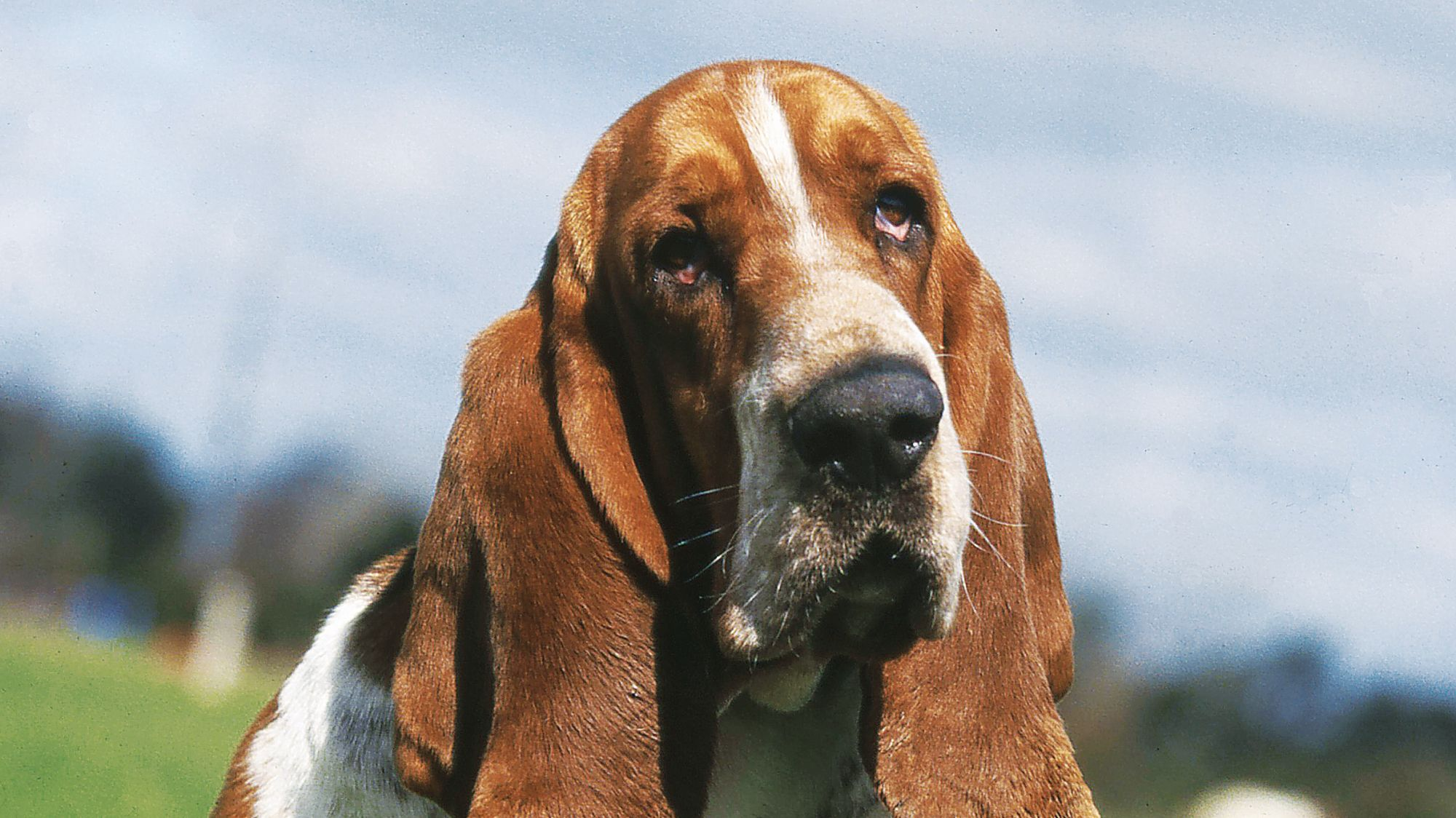
Get to know the Basset Hound
All you need to know about the breed
Affectionate, loyal, and very much at ease with themselves, the Basset Hound is top dog when it comes to their docile nature. Their long stocky body and short legs make the breed a big dog in a little dog’s body, and those extra long, velvety ears are equally entrancing.
The Basset Hound also possesses stunning markings distinguished by a mix of rich black, brown, and white dappled with flecks of tan. Their handsome coat and low-key nature has made them super suitable for showing. The breed is a staple on the dog show circuit, their charming physical and temperamental attributes often garnering them a top spot on the podium.
With a somewhat obstinate streak, Basset Hounds will benefit from being taught early when it comes to your expectation. Where it helps: Out on the trail, as the dog is part of the Hound Group and exhibits a determined pace and loud bark when taking on its bred-for role.
The nose of the Basset Hound is its most incredible feature: It ranks just behind the Bloodhound in accuracy. Beware the Basset Hound at mealtime though, should you not want your dinner to go missing!
Crazy loyalty is a given with the breed, however, training will take effort. That’s where treats - starting in puppyhood - come into play. Seemingly aloof, the Basset Hound will obey if you are persistent.
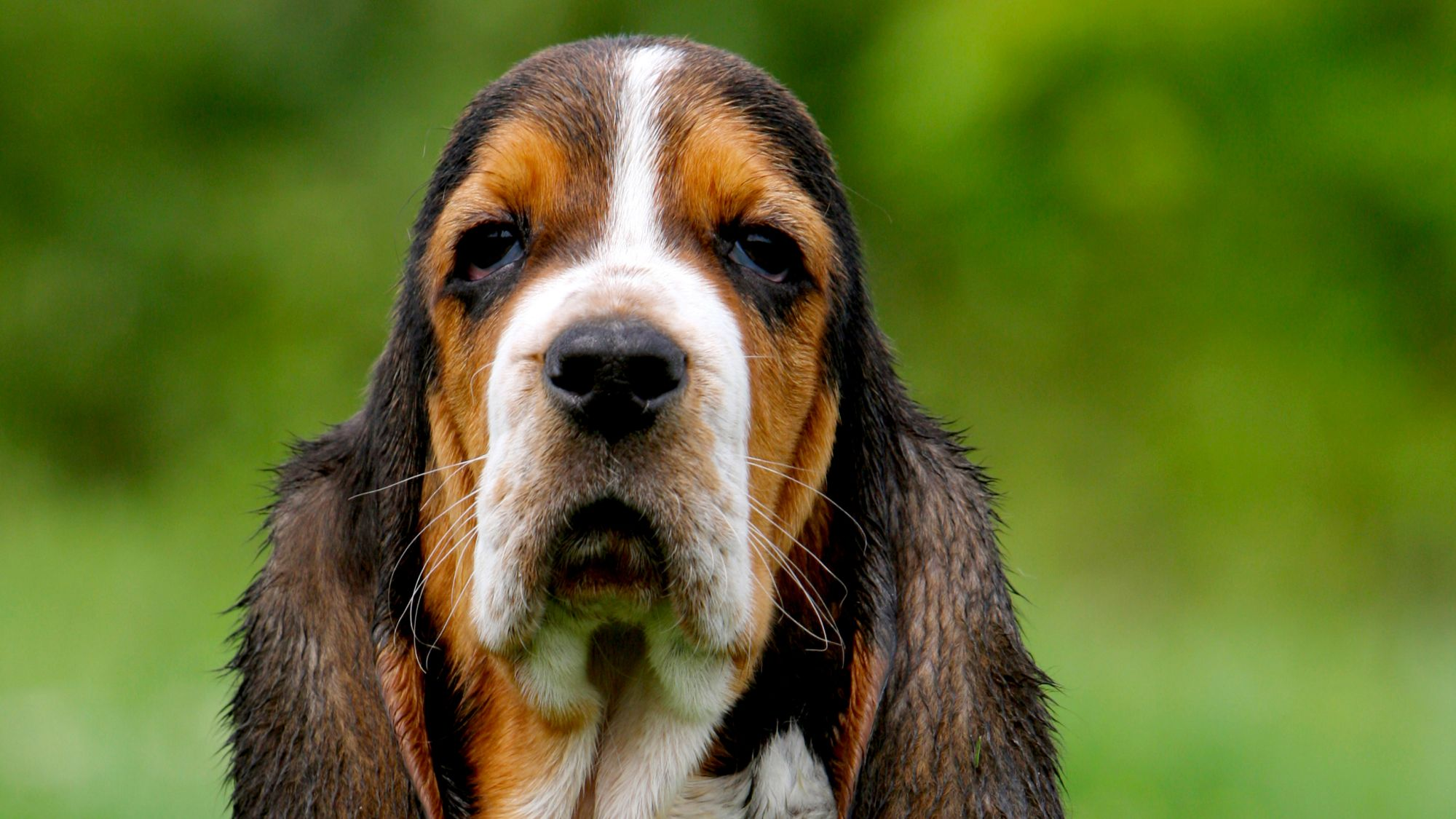
Two facts about Basset Hounds
1. Their sense of smell can sometimes lead them astray
The Basset Hound is only second to the Bloodhound when it comes to astonishing sense of smell. The highly prized trait may work against them though, leading them down a perilous path while in pursuit of said scent. It's best to keep them on a lead when going for walks or when in unfamiliar territory.
2. Basset Hounds are prone to bloating
The breed can succumb to gastric dilation and volvulus – commonly known as GDV or bloating. If this genetic predisposition occurs, the stomach can twist and fill with gas. Bloat can occur in dogs with deep chests and can be dangerous. Watch for signs of distress post mealtime. Regular, calm meals and not overfeeding help, as can surgery where necessary. A great vet can walk you through it!

History of the breed
The adored Basset Hound is aptly named by their home countries of France and Belgium for their long, low body: “bas” means low in French. It is thought that this scenting hound was honed by the Benedictine monks at the Abbey of St. Hubert in Liege, Belgium from earlier French breeds. The breed occurred when a mutation of the strain produced a dwarfed version. The low-slung dog was soon prized for an innate ability to traverse brushy, rugged terrain where smaller creatures - primarily rabbits - lived.
The French aristocracy kept the breed in vogue over the last two centuries since the Basset Hound’s phenomenal sense of smell, not to mention their devotion, was superb. The United Kingdom and the United States both formed an attachment to the breed as well. 1866 marks the first recorded presence of the Basset Hound in England, with Lord Galway importing a pair from France, followed by Sir Everett Milais in 1874 who then started to show the breed. Princess Alexandra of Wales followed suit, keeping the Basset Hound in royal kennels, and in 1882, the Kennel Club in England accepted the breed. In 1884, the English Basset Hound Club was formed.
Fanciers in the United States are near-obsessed with the breed, the dog’s signature somber visage even becoming the face of a 1960s ad campaign for Hush Puppy shoes.
From head to tail
Physical characteristics of Basset Hounds
3.Body
4.Tail
1.Ears
5.Coat
2.Head
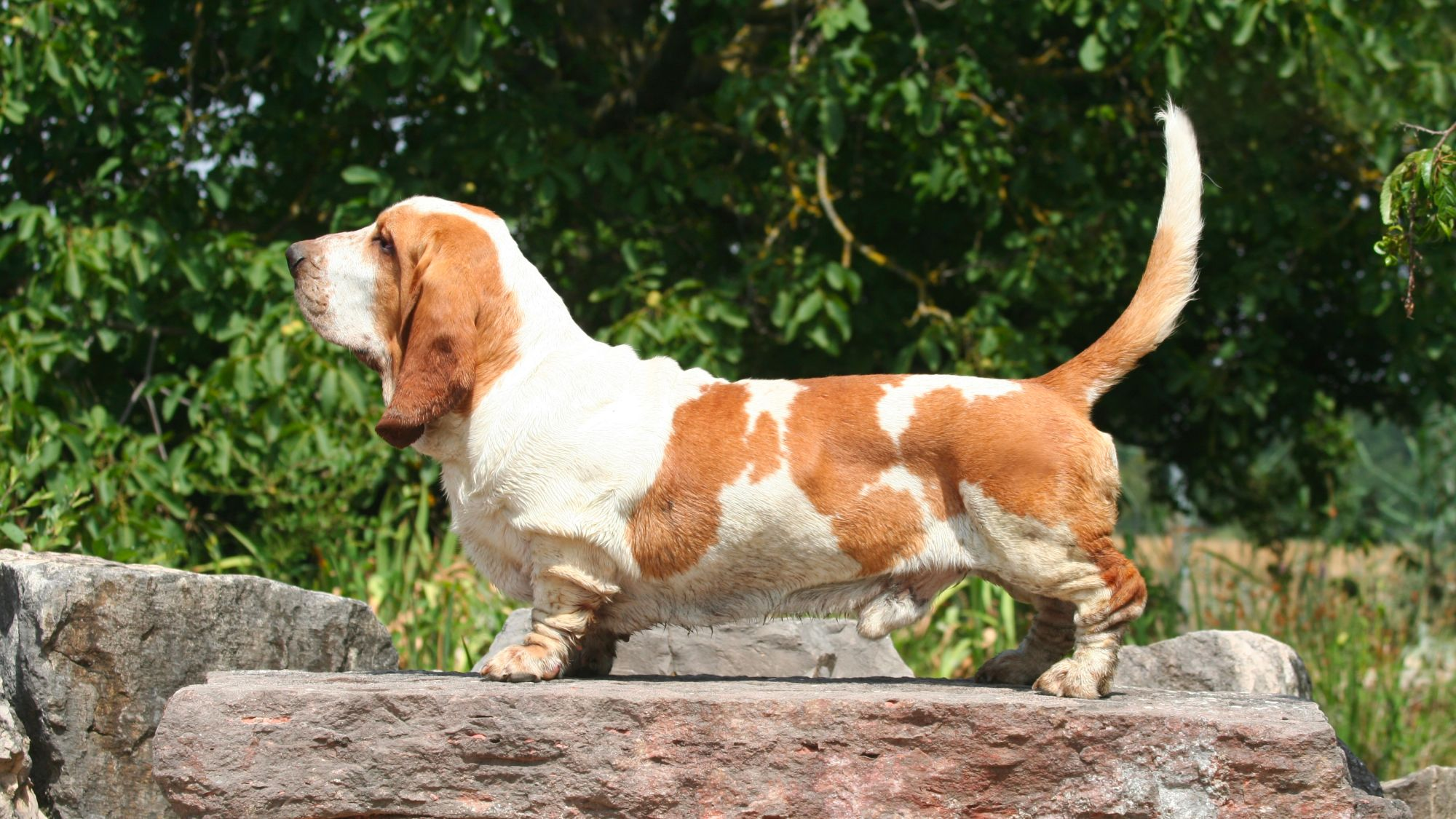
Things to look out for
From specific breed traits to a general health overview, here are some interesting facts about your Basset Hound
Healthy diet, healthier dog
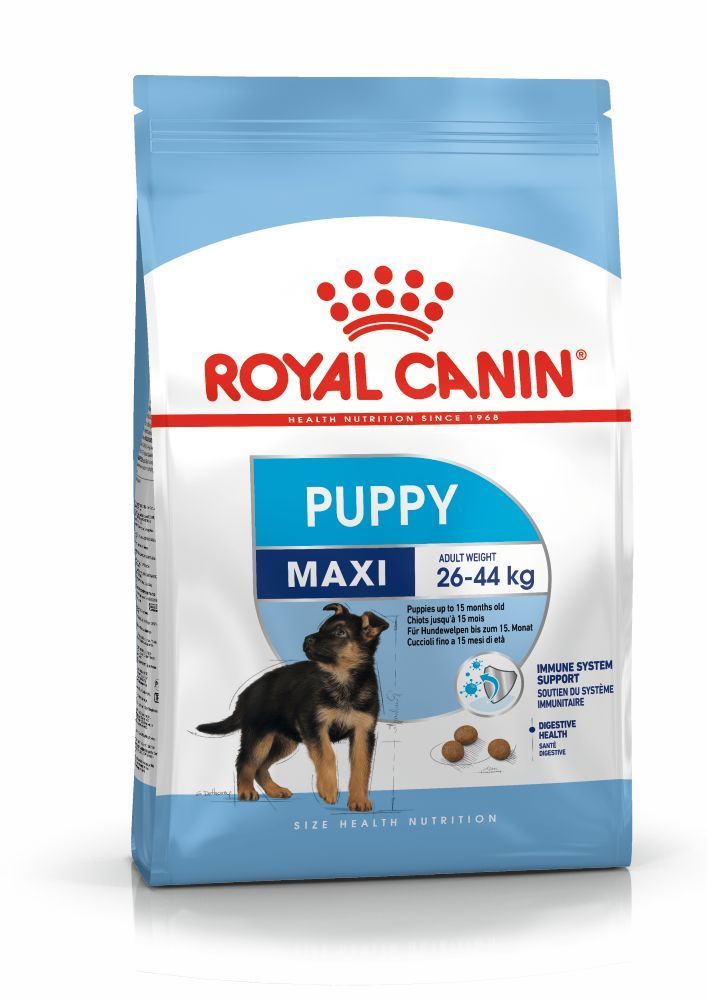
When choosing food for a Basset Hound, there are many factors to consider: Their age, lifestyle, activity level, physiological condition, and health including potential sickness or sensitivities. Food provides energy to cover a dog’s vital functions, and a complete nutritional formula should contain an adjusted balance of nutrients to avoid any deficiency or excess in their diet, both of which could have adverse effects on the dog.
Clean and fresh water should be available at all times to support good urinary regularity. In hot weather and especially when out exercising, bring water along for your dog’s frequent water breaks.
Energy intake may also have to be adapted to the climatic conditions. A dog that lives outdoors in winter will have increased energy requirements.
The following recommendations are for healthy animals. If your dog has health problems, please consult your veterinarian who will prescribe an exclusively veterinary diet.
A Basset Hound puppy’s requirements, in terms of energy, protein, minerals and vitamins, are much greater than those of an adult dog. They need energy and nutrients to maintain their body, but also to grow and build it. Until they are 15 months old, a Basset Hound puppy’s immune system develops gradually. A complex of antioxidants – including vitamin E – can help support their natural defences during this time of big changes, discoveries, and new encounters. Their digestive functions are different from an adult Basset Hound’s, too: Their digestive system is not mature yet so it is important to provide highly-digestible proteins that will be effectively used. Prebiotics, such as fructo-oligosaccharides, support digestive health by helping balance the intestinal flora, resulting in good stool quality.
It is important to choose a kibble with an appropriate size, shape, and texture. This growth phase also means moderate energy needs. Large-breed puppies, such as Basset Hound puppies, whose growth period is long and intense, are especially susceptible to skeletal and joint problems, including limb defects, bone deformities, and joint lesions. The first part of growth is mainly concerned with bone development, although the muscles also start to grow. This means that a puppy that eats too much (takes in too much energy) will put on too much weight and grow too quickly. Limiting the energy concentration of a food for Basset Hound puppies and feeding a correct daily amount will help control the speed of growth and minimise these risks.
Concentrations of other nutrients should be higher than normal in a specially-formulated growth food. Although the calcium content in the food needs to be increased, maxi-sized breed puppies are more sensitive to excessive calcium intake. It’s important to understand that adding any ingredients to a complete food formulated for the growth phase is at best unnecessary and at worst dangerous for the animal, unless prescribed by a veterinarian. It is recommended to split the daily allowance into three meals a day until they are 6 months old, then to switch to two meals per day.
Throughout their life, it is important to avoid feeding Basset Hounds human foods or fatty snacks. Instead, reward them with kibbles taken from their daily meal allowance, and strictly follow the feeding guidelines written on the package in order to prevent excessive weight gain.
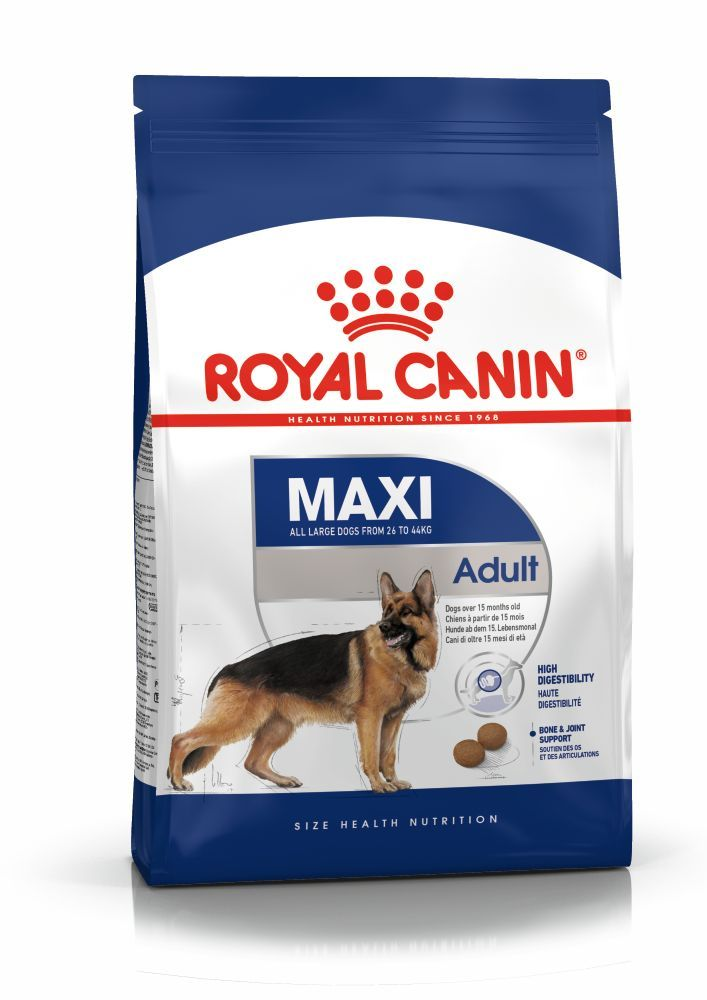
The main nutritional goals for adult Basset Hounds are:
Maintaining an ideal body weight by using highly-digestible ingredients and keeping the fat content at a sensible level Helping to support the health of their bones and joints with glucosamine, chondroitin, and antioxidants.
Promoting optimal digestibility with high-quality protein and a balanced supply of dietary fibre.
Helping preserve the health and beauty of the skin and coat with the enriched addition of essential fatty acids (especially EPA and DHA), essential amino acids, and B vitamins.

After 5 years old, Basset Hounds will start facing the first signs of ageing. A formula enriched with antioxidants will help maintain their vitality, and specific nutrients, such as chondroitin and glucosamine, will help support healthy bones and joints. Ageing is also accompanied by the modification of digestive capacities and particular nutritional requirements, so food for older Basset Hounds should have the following characteristics:
Higher vitamin C and E content. These nutrients have antioxidant properties, helping to protect the body’s cells against the harmful effects of the oxidative stress linked to ageing.
High-quality protein. Contrary to a widely held misconception, lowering the protein content in food brings little benefit in limiting kidney failure. On top of it, older dogs are less efficient at using dietary protein than younger dogs.
Reducing the phosphorus content is a good way of slowing down the gradual deterioration of kidney function.
A higher proportion of the trace elements iron, zinc, and manganese to help maintain the good condition of the skin and coat.
A higher quantity of polyunsaturated fatty acids to help maintain the quality of the coat. Dogs can normally produce these fatty acids, but ageing can affect this physiological process.
As they age, dogs increasingly suffer from teeth problems. To ensure they continue to eat in sufficient quantities, the size, shape, and texture of their kibble needs to be tailored to their jaw.
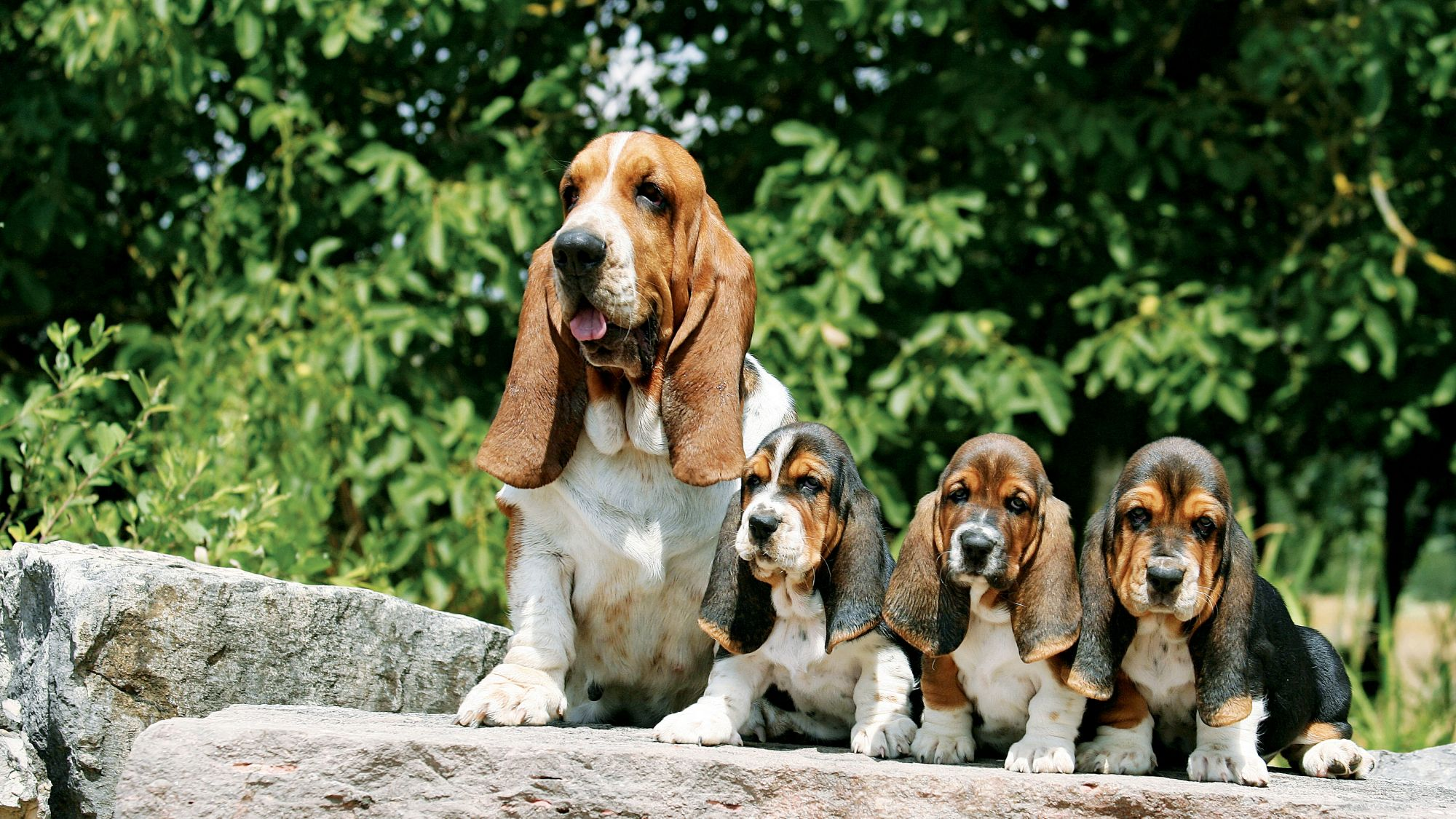
Caring for your Basset Hound
Grooming, training and exercise tips
<p><span>The Basset Hound needs a good amount of activity and daily walks are just the trick to keep their solid body trim. Don't be fooled by their smaller size – like any canine, they are still in need of a workout regime, as movement is key to keeping fit. And as a born sporting dog, the need to move is in his blood, with endurance being one of the Basset Hound’s top traits. They may be low-slung dogs but what they lack in height, they make up for in endurance. </span></p>
<p><span>Keeping the Basset Hound’s coat groomed is important, as it is a breed prone to shedding a great deal. And who wouldn’t want to maintain that dappled, multi-coloured manteau? A soft brush or a shedding tool are the right devices to have on hand to keep that slick, almost-oily coat neat. The length means a short brushing session is enough. The occasional bath should also be given, in order to ensure that your Basset Hound stays as fresh as possible – barring any rounds with muddy puddles – as they can be prone to an unusual, breed-specific body odour. Make sure that you clean in, around, up and under those skin folds, as dirt and bacteria can hide there.</span></p>
<br />
<p><span>Hounds think for themselves and the Basset Hound is no exception. A confident and pleasant breed, their intelligence may be a drawback when it comes to obedience training, as they have a tendency to do what they want and have a stubborn side! They don’t take kindly to harsh criticism but rather respond to kinder, gentler commands, which also need to be consistent. Give those and your Basset Hound should be one cooperative dog! The other part of their character: They very much enjoy attention and if they don’t get it from you, the Basset Hound will seek it out by nudging you, following you around the house or giving you that longing look. </span></p>
7/7
All about Basset Hounds
All about Basset Hounds
As if the turned-out feet and longing stare
of the Basset Hound weren't enough, the breed’s temperament is perfectly suited
to most home situations. Described as good-natured, peaceful and sociable with
everyone they come across, beneath their sophisticated, droll exterior lies a clownish
nature.
Basset Hounds fit in well with almost
everyone they meet. They are, however, prone to excessive body odour, so bathing
should be routine. Grooming is also high up on the maintenance scale, as the
Basset Hound sheds a good deal. Their stocky bodies do require doggy workouts to
keep them fit and prevent weight gain in this laid-back breed.
Suggested Breeds
Read more on this topic
Sources
1 – Veterinary Centres of America https://vcahospitals.com/
2 – Royal Canin Dog Encyclopaedia. Ed 2010 and 2020
3 – Banfield Pet Hospital https://www.banfield.com/
4 – Royal Canin BHN Product Book
5 – American Kennel Club https://www.akc.org/
Like & share this page